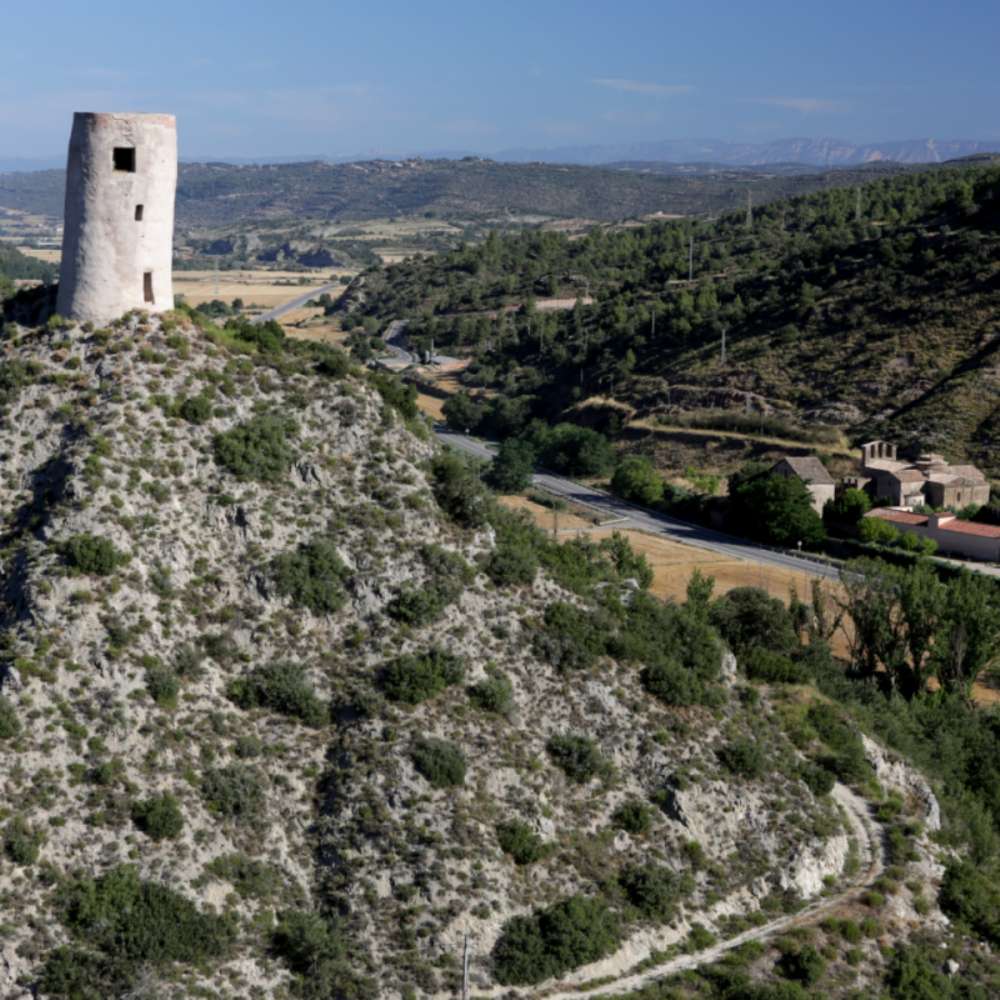Castellfollit Castle
The conquest of this area by the counts of Cerdanya was consolidated at the turn of the 11th century with the construction of the castle. It stands on a long rocky spur that overlooks the crossroads between the road of Llobregós and the road that stretches from the Cardona area.
The complex is completely enclosed by walls, adapted to the elongated profile of the mountain range and its staggered terrain. A circular tower stands in the upper enclosure. In the middle section there are walls separating the gateway to the enclosure. A series of courtyards and vaulted rooms are well preserved in the lower enclosure. These rooms include a dungeon with graffiti featuring castles, knights and siege engines.
Three albarrana towers that served as additional defence units are situated outside the castle enclosure: the Ballester tower (to the west), the Raval tower (to the south) and the Cap Xic tower (to the east).
In around 1000 AD, the fortress of Castellfollit de Riubregós formed part of the possessions of the county of Cerdanya but was subsequently inherited by the county of Barcelona. It was originally entrusted to the Cervera family but towards the second half of the 13th century it fell under the control of the Cardona family, whose dominions included most of the fortresses in the surrounding area.
The castle has witnessed several important events, such as the battle in 1822 between the absolutists of Castellfolit and the liberals commanded by General Espoz Mina, who attacked and destroyed the castle.
Guided tour on the second Sunday of each month at 11:00.
To book a tour and view the mediaeval graffiti, please call 93 869 30 31 (Town Hall).
www.riubregos.cat

I RODALIES



